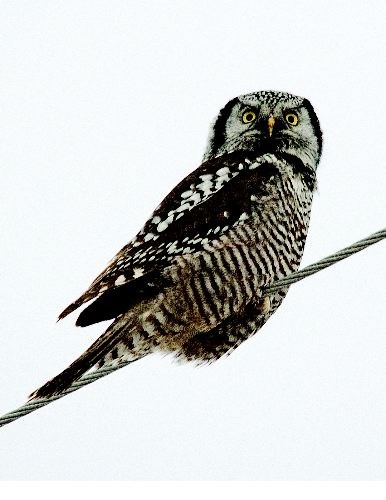Bird lovers across Canada and the U.S. are breaking out their binoculars, checklists and sharpening up their birding skills.
The 15th annual Great Backyard Bird Count takes place Feb. 17 to 20, with professional and amateur ornithologists alike taking the opportunity to put their sightings to good use.
"It's very easy and it's a lot of fun if you like birds," said Dick Cannings, who coordinates the Great Backyard Bird Count with Bird Studies Canada. "It's something you can involve your kids with and people of all ages and abilities in terms of finding birds."
The annual count is also co-ordinated by the Cornell Lab of Ornithology and Audubon, an American group dedicated to the conservation and restoration of natural ecosystems with a focus on birds.
All participants need to do is take at least 15 minutes out of their day between Thursday and Monday and note the amount of birds on the available checklist in any given area.
Count the greatest number of individual species found together at any one time and then enter the results through the Great Backyard Bird Count website at www.birdsource.org/gbbc.
According to Cannings, thousands of checklists are submitted every year, with the information going into a big database.
"It's important for us as bird biologists to get snapshots of where birds are," he said.
Novice birders should get their hands on a field guide and bring along a checklist specific to the Prince George area.
"If you're trying to report a cardinal or blue jay that's supposed to be back east it would signal you might have made a mistake or it's something quite unusual and you should report it to us," Cannings said.
After the 2011 count, more than 92,000 checklists were submitted with 594 species observed and more than 11 million individual birds counted in Canada and the United States.
Warmer temperatures across the continent this winter could make for some interesting sightings.
"Often when it's warm, you get a higher diversity of birds but fewer birds seen [in backyards]," explained Cannings. "They're not as dependent on feeders as in colder winters. It can have a bit of a complex effect."
While the count was initially designed as a backyard count for people who like to feed birds in the winter, the demand was such that it was expanded so people could report their findings from anywhere like a local park or wildlife refuge, said Cannings.
Prince George Naturalists Club chair Clive Keen said he expects there to be standard winter birding, with about 50 species readily available in town, but that "many of those 50 don't hang around backyards."
Areas where there are fruit-bearing trees are good locations for counting, though Keen heartily encourages setting up a birdfeeder in the backyard.
"There's no excuse not to have a feeder," he said, noting he always makes sure his kitchens have a window looking out onto the yard. "Washing up becomes a pleasure."
Species which could be found in Prince George include red-winged blackbirds, hawk owls, belted kingfishers, American three-toed woodpeckers, European starlings, house sparrows and bald eagles.
"If people are bitten by the bug, there are more programs they can get involved with," said Cannings.
Those who are bitten by the wildlife bug can get involved with the Prince George Naturalists Club at their annual general meeting Feb. 16 at 7 p.m. at 4051 18th Ave.



